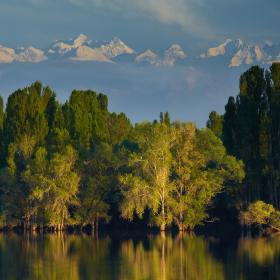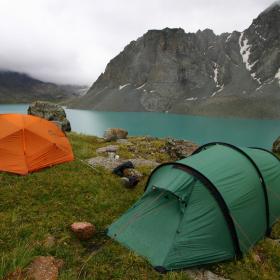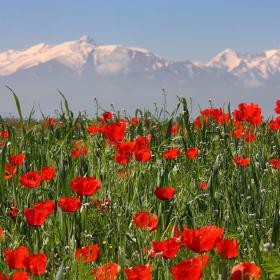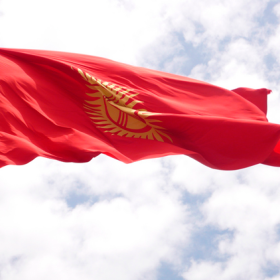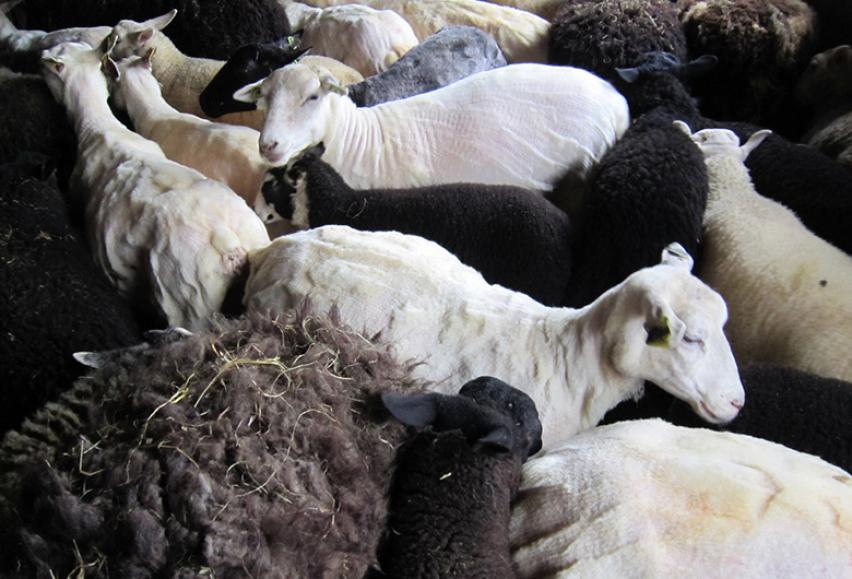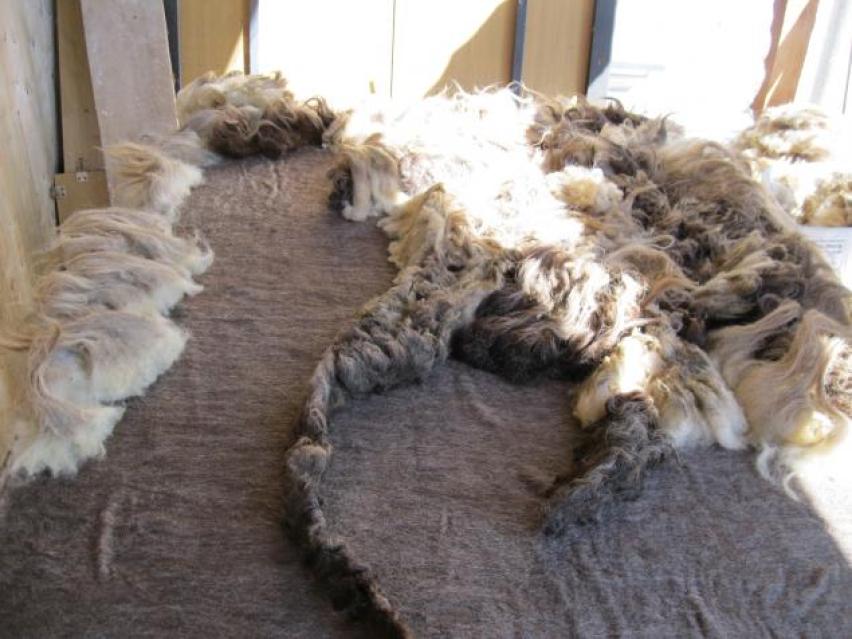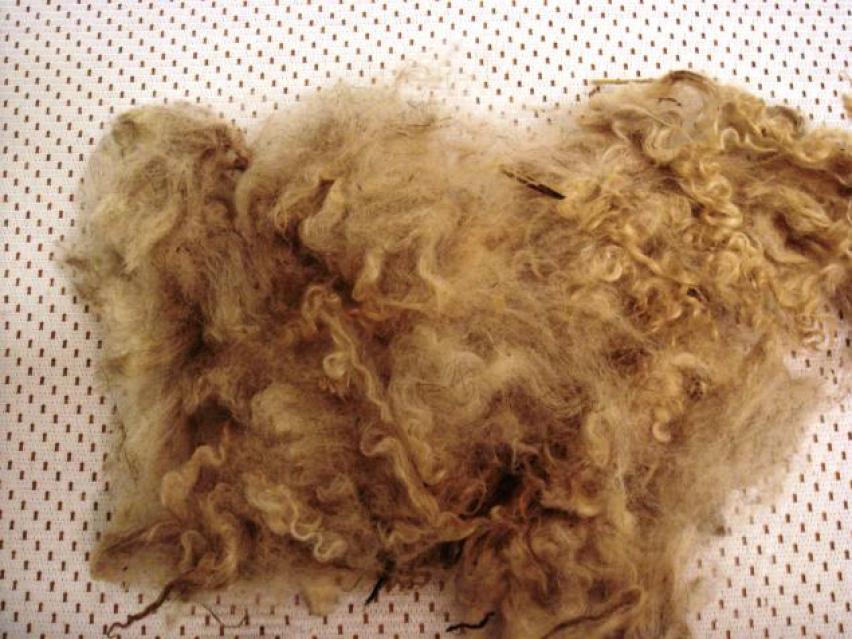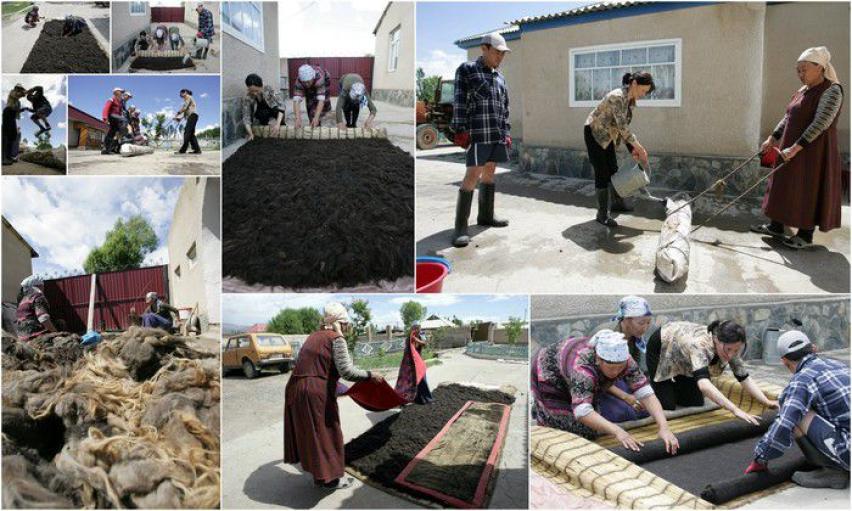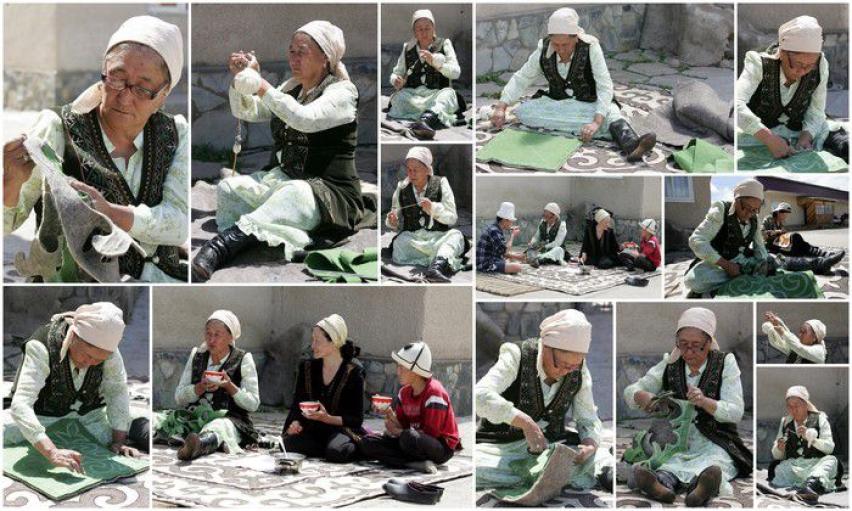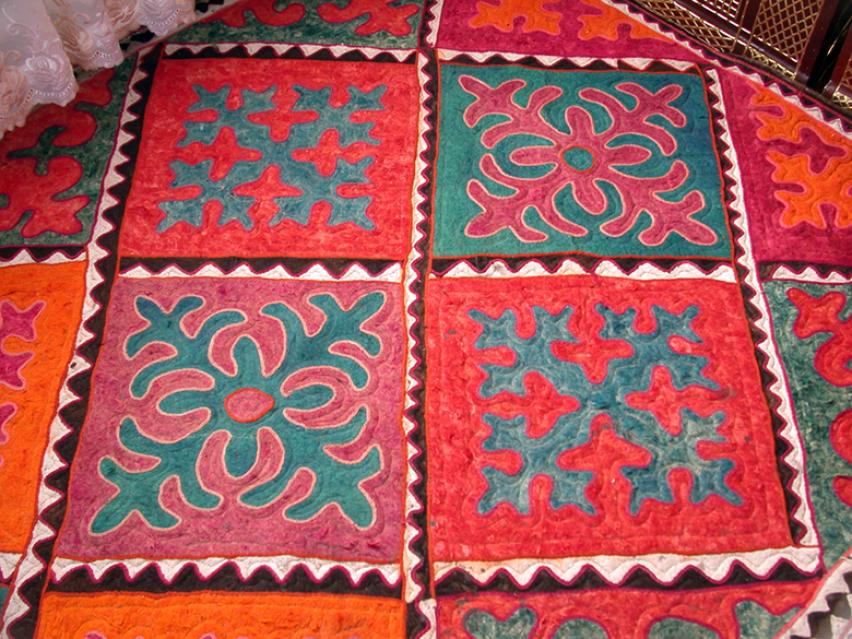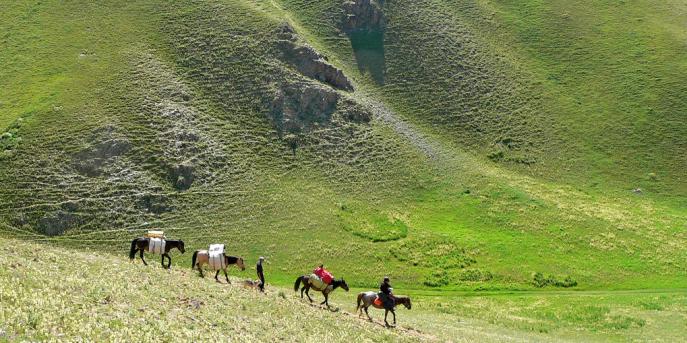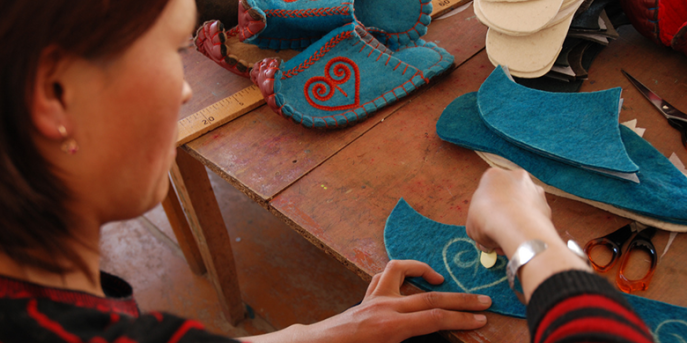Manufacturing process of the Kyrgyz national carpet - Shyrdak
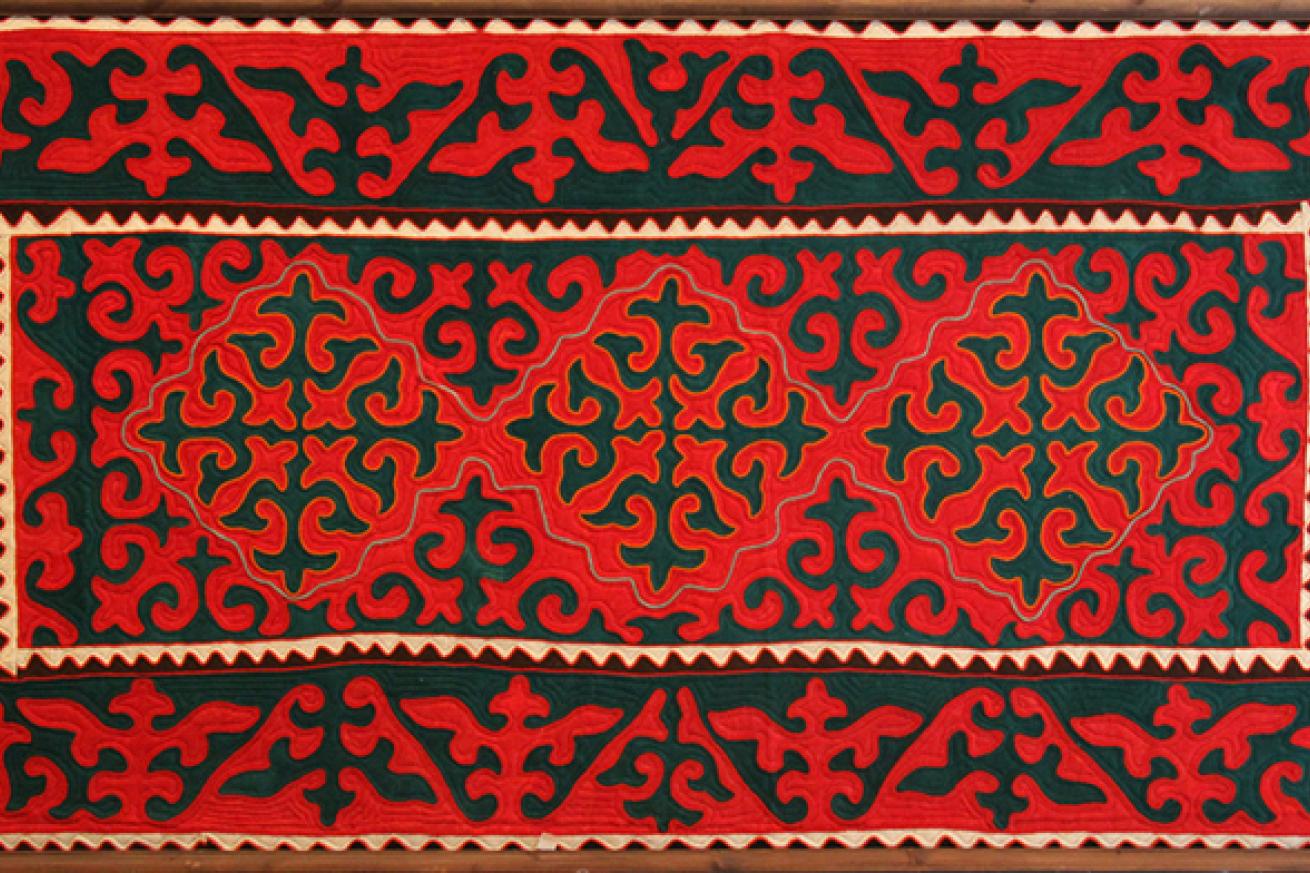
Shyrdak - Kyrgyz National felt carpet with patterns composed of major contrasting colors. Shyrdak is one of the toughest of manufactured felt products. Shyrdaks decorate yurts and houses throughout Kyrgyzstan. They cover walls, lie on the floor or simply placed as a decorative element. Aside from the aesthetic value shyrdak retains heat; it’s very soft and dense, which makes it indispensable in winter. Shyrdak of a good quality can last at least half a century before it wears out.
First shyrdaks had only two natural colors, black and white. Closer to the nineteenth century, the increasing popularity led to active use of bright and vivid colors which kept popularity of multi-colored models along with monochrome models until modern days. Today, for the manufacture of monochrome patterns natural dyes of different colors are used: beige, gray, brown, white and black. During the manufacture of multi-colored shyrdaks crafters follow a strict color harmony, combining no more than two colors: white and brown, brown and orange, white and red, blue and red, red and green. Red and white colors symbolize procreation, while green means mountains, whereas the blue and red form a union of Issyk-Kul Lake and picturesque Ala-Too mountains.
Shyrdak manufacturing is a complex process and is rarely done by one person. To make a small shyrdak you will need a few weeks, but shyrdak 2x3 meters may take a year! Of course work can be facilitated by simpler ornament and with the involvement of other crafters, and most of shyrdaks are now produced by a professional manufactory, where no less than twenty masters are working on incoming orders for carpets.
Shyrdak ornament is composed of various animals, plants and their symbols and each of them has its own unique value. But these patterns are difficult to make, and they are often replaced by no less interesting geometric shapes and compositions, diamonds and hexagons.
For a separate household it would take roughly a year to fulfill complete cycle of making shyrdak.
Now we will begin the process of manufacture. To create a midsize shyrdak you will need to gather wool from at least five sheep. Next you’ll need a minimum of two kiiz with different colors each. Kiiz then neatly cut into equal squares and then chalk is used to outline future ornament. For greater precision and accuracy, expert can use a special pattern. In addition to pattern technique in order to achieve perfect symmetry pattern can be outlined on one quarter marked-side and then closely leaned to the other parts, which transfers chalk drawing on other parts. Then sharp knife removes the outer contour of the pattern forming internal and external background in two colors. For the originality of execution this technique is called a mosaic. Professionally made mosaic technique creates a beautiful pattern, where you wouldn’t be able to determine where the background is and where is the main pattern.
Further, all fragments of shyrdak should be sewn together, and this part may takes the longest. However watching this process is incredibly interesting.
For sewing shyrdak fragments stapled wool cord is always used. This cord is known as jeek. Jeek should be different from the primary colors of shyrdak to give more expressive ornamentation.
First sewn side panels then central panels, which, in turn sewn into the bordering curb.
Color combinations in borders do not coincide with the central field. Colors are defined by shyrdak producing region. The main element of shyrdak edging field - white and black triangles, personifying the mountains.
Shyrdak – is a work of art and pride for an artisan!

